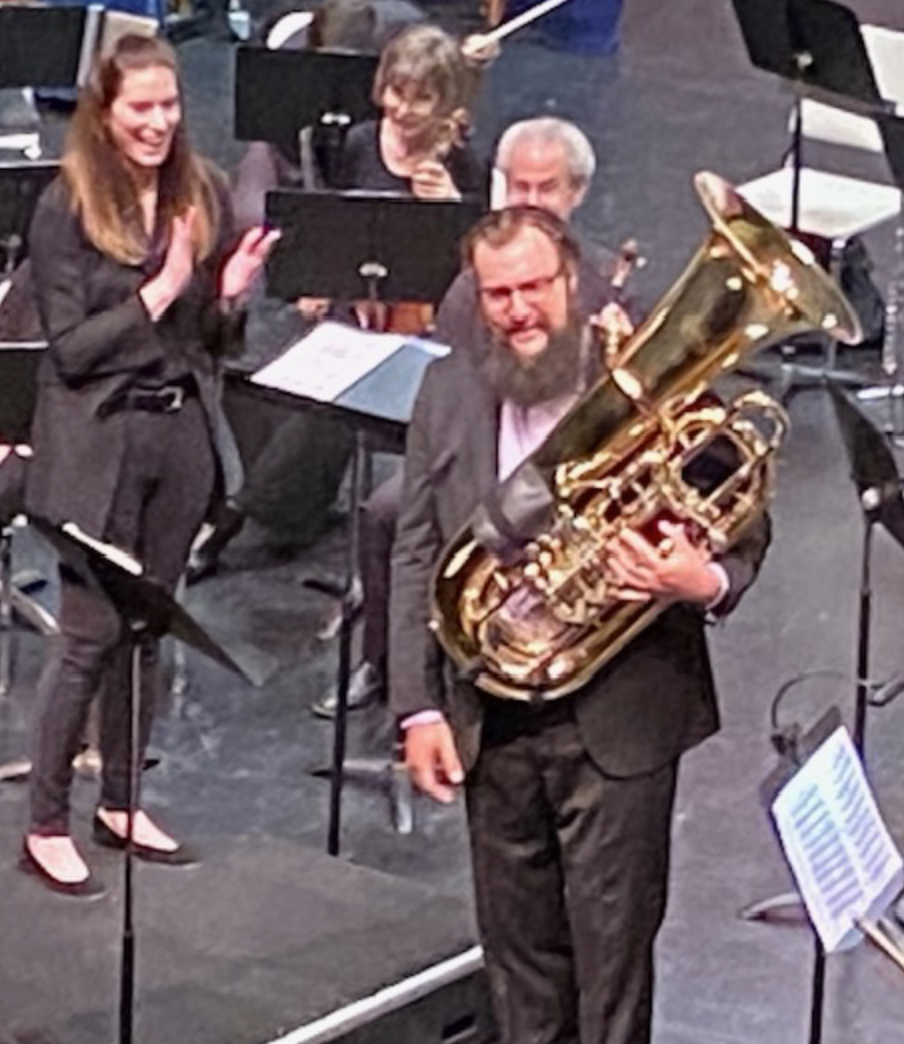|
Symphony
FROM THE NEW WORLD TO THE OLD WORLD
by Peter Lert
Saturday, June 14, 2025
Chamber
MC2 DUO RECITAL CLOSES 222'S SEASON
by Terry McNeill
Saturday, June 14, 2025
Choral and Vocal
CANTIAMO SONOMA'S LUSCIOUS A CAPELLA SINGING IN SEASON ENDING CONCERT
by Pamela Hicks Gailey
Sunday, June 8, 2025
Symphony
SRS SEASON ENDS WITH RESOUNDING TA-TA-TA-BANG
by Terry McNeill
Sunday, June 1, 2025
Symphony
YOUTHFUL VIRTUOSITY ON DISPLAY AT USO'S MAY CONCERTS
by Peter Lert
Saturday, May 17, 2025
Symphony
MYSTICAL PLANETS AND LIVELY GERSHWIN ORTIZ AT FINAL SRS CONCERT
by Peter Lert
Sunday, May 4, 2025
Symphony
VSO'S CONCERT MUSIC OF TIME, MUSIC OF PLACE
by Peter Lert
Sunday, April 27, 2025
VOCAL ELEGANCE AND FIRE AT THE 222'S RECITAL APRIL 26
by Pamela Hicks Gailey
Saturday, April 26, 2025
CANTIAMO SONOMA SINGS AN INSPIRED GOOD FRIDAY MOZART REQUIEM CONCERT
by Pamela Hicks Gailey
Friday, April 18, 2025
DRAMATIC SHOSTAKOVICH SYMPHONY CLOSES PHILHARMONIC'S 25TH SEASON
by Terry McNeill
Sunday, April 13, 2025
|
 |
 D Sadava (l) and J. Seiberlich Sept. 17 |
SADAVA CONDUCTS ELEGANT SO CO PHIL INAUGURAL CONCERT
by Terry McNeill
Sunday, September 17, 2023
Sonoma County’s Philharmonic opened its 24th season Sept. 17 in the Jackson Theater with a program that looked pretty conventional – a Beethoven Symphony, Debussy’s popular Prelude to the Afternoon of a Faun and, wait, ooops, a Tuba Concerto.
In my memory there has not been a local performance of a large scale work for Tuba, but soloist Jonathan Seiberlich joined guest conductor Dana Sadava with the Philharmonic in a rousing 13-minute traversal of the Vaughan Williams work from 1954. It was a wonderfully effective performance with the soloist’s big sound in the forefront, ocassionally overpowering the orchestra! The music has touches of Stravinsky rhythms and a Shostakovich march but was tempered by the lovely Romanza middle movement where Ms. Sadava’s subtle phrasing and slight ritards were telling.
The finale was played fast as advertised, but never went off the rails, and Mr. Seiberlich’s scales were clean, notes never were slurred, and the trills even. He played from score and used a bass tuba in F, though a B-Flat instrument is often heard in the Concerto. His control of the powerful lowest register in the long cadenza carried perfectly through the hall, and the work received an enthusiastic ovation from the 250 attendees.
The afternoon began with the seductive reading of the famous Debussy, with flutist Emily Reynolds elegantly nailing the many exposed thematic statements, some wistful, some laconic. Many Philharmonic players had convincing solos – Chris Krive (oboe), harpist Christine Goodwin, hornist Rachel Aragaki and clarinetist Mary Kruzas' graceful parts and tonal richness. Ms. Sadava took a slower tempo that I often hear in this ariose music, and it worked well, and her conducting generated rich orchestral colors throughout. It is what makes the work wonderfully luxurious.
Following intermission Beethoven’s F Major Symphony (Pastoral) was heard, a fairly conventional transversal of the familiar score that however was splendidly played. Standing rooted to the podium (no Leonard Bernstein footwork) Ms. Sadava deftly fashioned the five-movement piece that began with a gentle awakening and evolved over 46 minutes into a cohesive whole of beauty and at times excitement. The sounds of brooks and birds were on display, and the village folk dances had a gaiety that made the succeeding Allegro thunderstorm fourth movement even more potent, with prominent percussion, piccolo and trombone playing.
Sonics throughout had more low end authority than last year, with three contrabasses and seven cellos. Sparkling duos were everywhere in this performance: oboe-bassoon (Mr. Krive, Miranda Kincaid and Steven Peterson) and flutist Debra Scheuerman with Ms. Reynolds.
It was a radiant and at times mysterious music, the bucolic ending in the conductor’s hands quietly referring to first movement’s themes. Ms. Sadava recognized many Philharmonic musicians and seemed to be delighted with the warm and loud applause.
|

